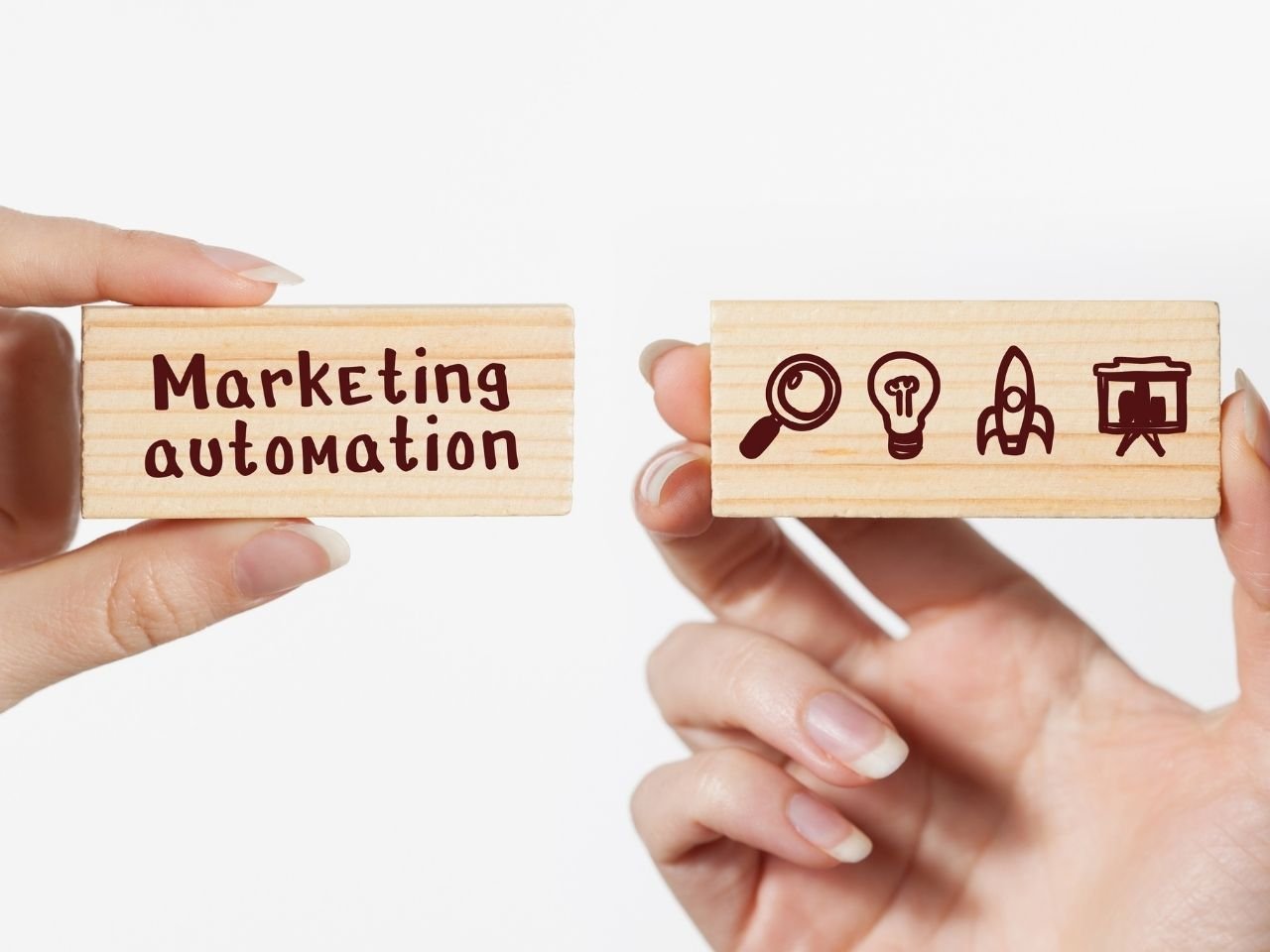With the world moving towards the future, the tried and tested digital marketing methods will not be enough to win over your customers. One of the major reasons why the big brands that the world admires succeed is because they integrate digital marketing automation into their processes. So, if you’re not already doing it, now’s the time to get started.
What is marketing automation?
Marketing automation is the process of using particular software to automate repetitive marketing activities and provide personalized experiences to prospective customers. Valued at $6.87 billion in 2020 according to Mordor Intelligence, the marketing automation industry is anticipated to hit an incredible $19.66 billion by 2026, growing at an astronomical rate of 19.2 percent.
An advanced technique invented to assist marketers in capturing leads, nurturing them through the marketing funnel, studying their behavior as well as overall campaign performance, marketing automation has transformed how brands operate. Additionally, by empowering marketers to use cross channel marketing, you are now able to create consistent and quality customer experiences.

Why is it so important for your company’s future?
91 percent of marketers attribute the success of their online marketing campaigns to marketing automation. Four out of every five marketing automation users witnessed an astonishing 77 percent increase in their conversion rate. In light of this, 63 percent of marketers plan to increase their budgets to boost their marketing efforts.
From helping you increase the efficiency of your processes, optimizing productivity, improving database quality, and enhancing your campaign management to measuring your campaign performance, aligning your sales and marketing efforts, and boosting your marketing return on investment (ROI), there are many benefits for your business.

Five of the best marketing automation strategies to help you grow
1. Lead nurturing
Businesses want their customers to evolve from mere visitors to leads, buyers, and even their promoters. But this transformation doesn’t happen overnight. A crucial part of inbound marketing, lead nurturing is a relationship building process where a business uses marketing methods to convert prospects into buyers and promoters.
Before going any further, let’s understand why your business needs to embrace lead nurturing. Most of your website visitors are not ready to make a purchase from your business the first time they visit. You can lose out on massive brand growth opportunities if you don’t have a concrete strategy to woo your prospects.
Lead nurturing is one of the essential growth marketing strategies and initial steps that you need to take in order to make your prospects reach the end of the marketing funnel. According to B2B Marketing Zone, lead nurturing helps businesses generate 50 percent more sales, and reduces lead acquisition costs by 33 percent. Additionally, 47 percent of larger purchases are made by nurtured leads compared to those that are non-nurtured.
From optimizing your landing pages, social accounts and websites, to minimizing bounce rates, creating powerful calls to action (CTAs), and creating valuable content, lead generation can help you increase your conversion rate drastically. If you want to ace the lead nurturing process but don’t know how to get that done, teaming up with a marketing automation agency will help your business get it done.

2. Lead scoring
Given that not all leads are interested in purchasing your products, it is a good idea to invest your time and resources on those who are likely to convert. Lead scoring, a key component of B2B marketing automation, helps your business achieve that goal.
Lead scoring assigns a value to leads and these values depend on customer behavior, demographics, and other attributes. When you add up the values, you get a score for every lead. If the leads score meets your desired range, you take action and proceed with lead nurturing.
By incorporating lead scoring your business can improve sales efficiency and enhance your marketing effectiveness by giving you insights into your prospects. Practicing this will help you measure the potential return on investment (ROI) and enable marketers to make informed decisions.
There is a customer acquisition cost that businesses have to invest in during the lead generation process. Through lead scoring, you can identify key marketing activities that are driving more qualified leads, segment prospects and communicate with them based on their sales-readiness factor. This practice will help you save costs on customer acquisition, and generate more revenue.

3. Triggered emails
Triggered emails are automated emails sent to prospects based on the action they take on your website or landing pages. Also known as the automated behavior process, triggered emails are an excellent strategy for marketers to inform prospects about what to do next and how to get further information, or to encourage them to complete their purchase .
There are a few reasons why triggered emails are a must-have, including to:
- Build prospects’ trust
- Enforce customer-business relationships
- Meet expectations
- Increase customer retention
Triggered emails witness 70.5 percent more email open rates and 152 percent more click-through rates compared to other types of emails, as stated by Campaign Monitor. Additionally, 75 percent of revenue from email marketing results from this process. Ignoring these can cost your business a lot of money.
The best times to send trigger emails are:
- When prospects register or subscribe to your service through welcome emails
- When they make transactions
- When you discover abandoned products in their carts
- When you spot customers who haven’t been active for some time
- To celebrate your customer’s birthdays and anniversaries
By setting up trigger emails for predefined customer actions and events you can improve your customer lifecycle, enhance your audience engagement, and boost sales simultaneously. Working with growth marketing experts that provide marketing automation solutions can help you work out the best strategy for your triggered emails.

4. Personalized website content
With research from Epsilon showing that 80 percent of customers inclined to purchasing products and services from brands that provide personalized experiences, many businesses are investing heavily in this process. Some noteworthy mentions of incredible personalized customer experiences include Netflix, Sephora, Wells Fargo, USAA, and Coca Cola.
Content personalization is a part of adaptive marketing that creates a customized experience for every prospect. Dynamic content when combined with marketing automation allows you to display relevant content in your emails and websites that best fits the prospects’ attributes.
One of the best ways to provide tailored content to your leads is by segmenting them into product categories, business verticals, buyer personas, customer purchase history and loyalty, buyer’s journey stage, and more. Deepening your segmentation will help you identify more opportunities to present customized content.
Let’s say that you run an online apparel store for men and women. When the user indicates their gender when they select their preference on your site, your website needs to showcase relevant products to the user based on their gender preference. This is content personalization, and one of the more basic ways of doing so.
When your business features relevant content to website visitors, it is presenting a quality experience. Making this as a foundation for your content marketing automation strategy will help you reach more audiences better and increase your conversions.

5. Results tracking
However, many companies that integrated marketing automation find it difficult to measure their automation performance. By carefully monitoring key metrics that dictate your business goals, you can measure your marketing automation’s performance without much hassle.
On the other hand, you need to check for loopholes in processes like scope of your content repository, poor audience segmentation, your automation software’s reliability, your team’s efficiency, sales and marketing alignment, and more that can tarnish your automation’s results.
Seek to neutralize such inefficiencies to improve your overall productivity. Once you’re confident that these issues won’t occur, you can proceed with tracking, and measuring your automation performance. Prior to that you need to ensure that your sample sizes that you’re analyzing are large enough to draw statistical analysis from.
Some of the metrics that you need to monitor closely are:
- Diversity of automation workflows that you’ve created for different customer journey stages
- The total frequency and number of activities occurring in every segment
- Open rate – check whether your automated emails are opened
- Click-through rate – analyze if your prospects are clicking on your CTAs
- Conversion rate – study the conversion rates at different marketing stages
- Site traffic – check if the traffic to your site or landing pages have increased or decreased
- Revenue growth -study and observe revenues in pre and post marketing automation phases
Marketing automation is the foundation for your organization’s growth in today’s world. 27 percent of firms still consider marketing automation as a new concept that’s quite a challenge to deal with.
Growth Marketing Genie is an established growth marketing agency that understands your business, audience, and industry needs and provides excellent marketing automation solutions. Talk to our team of professionals today!
Book in a Free Consultation

